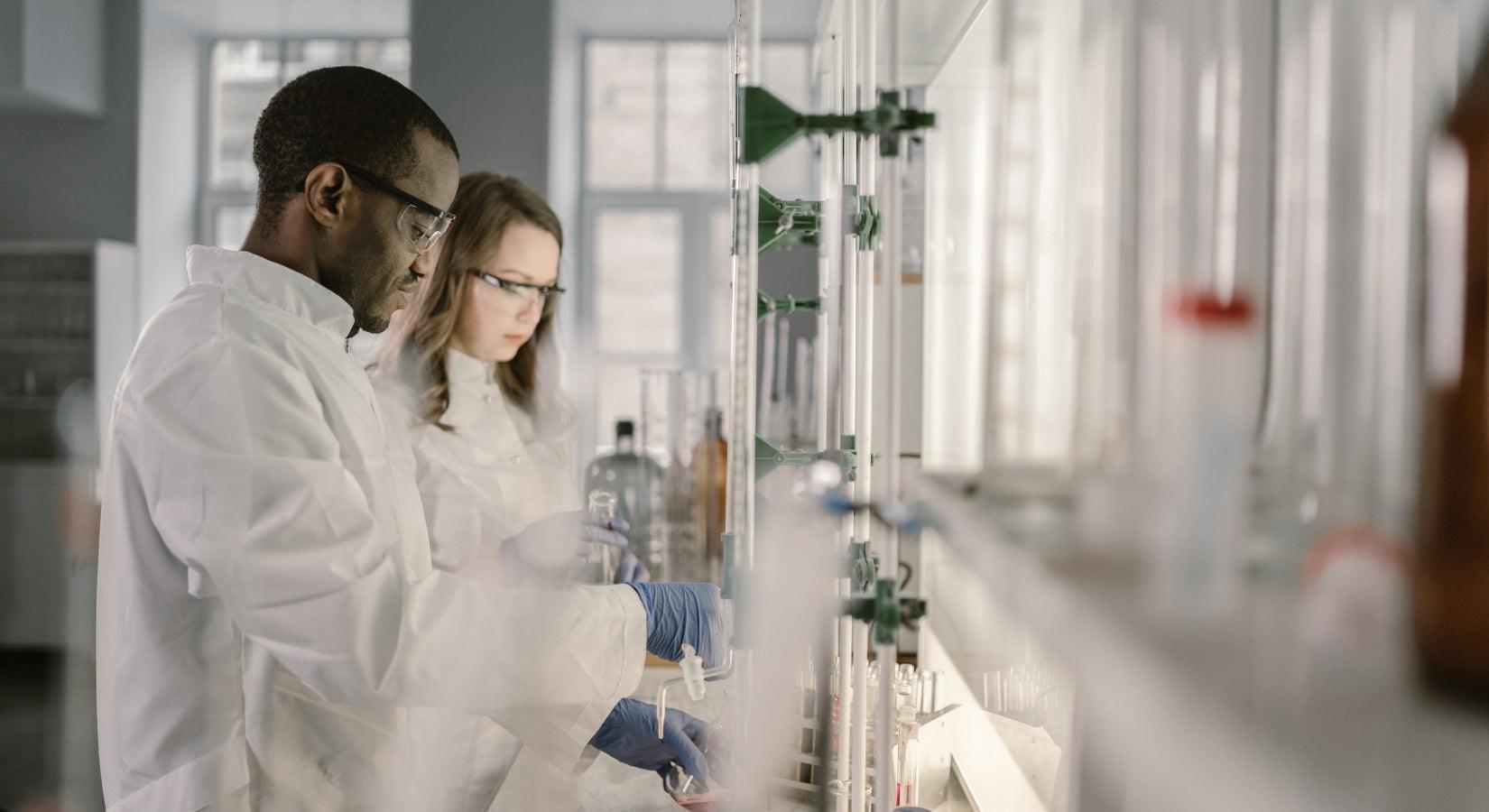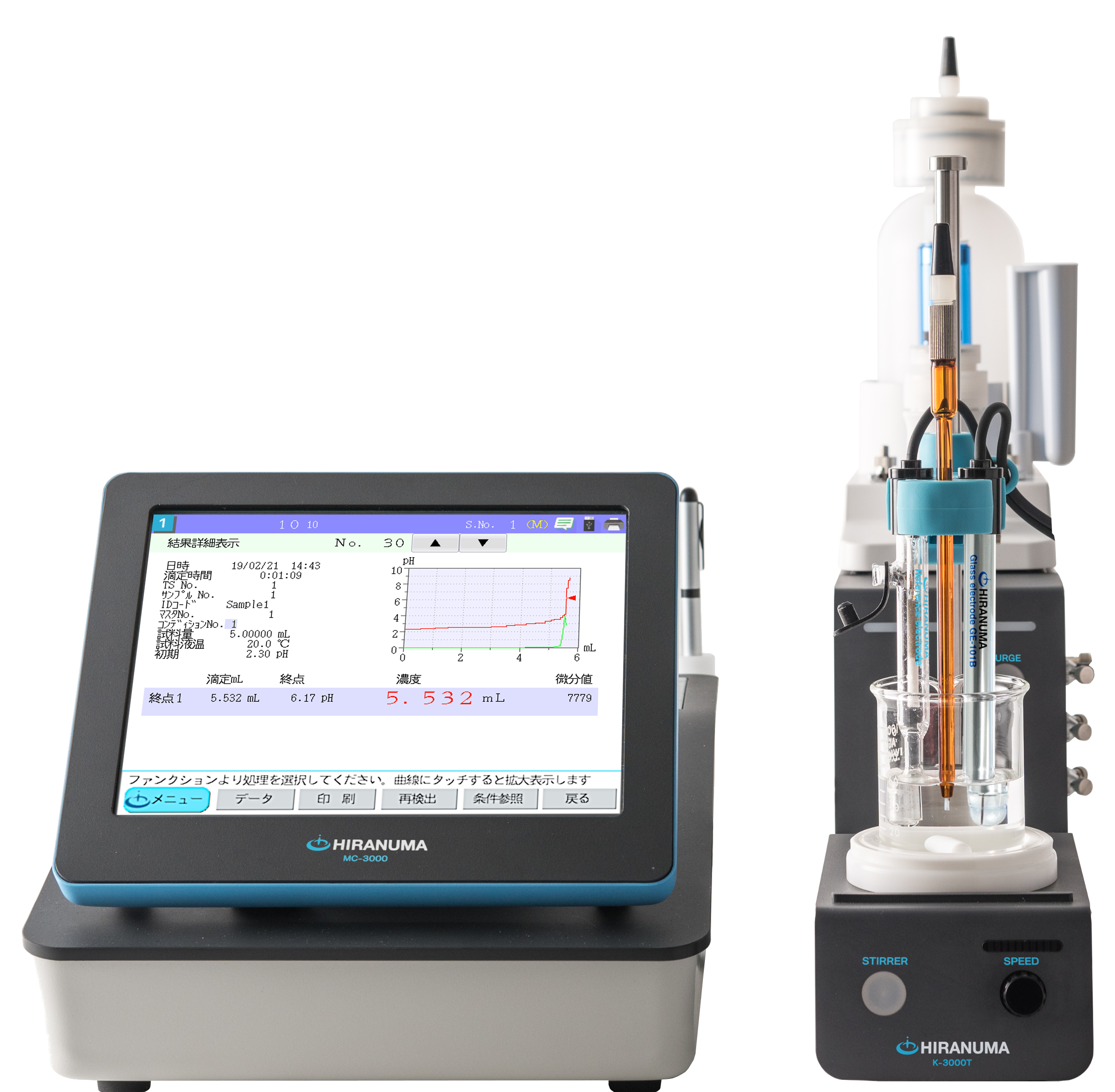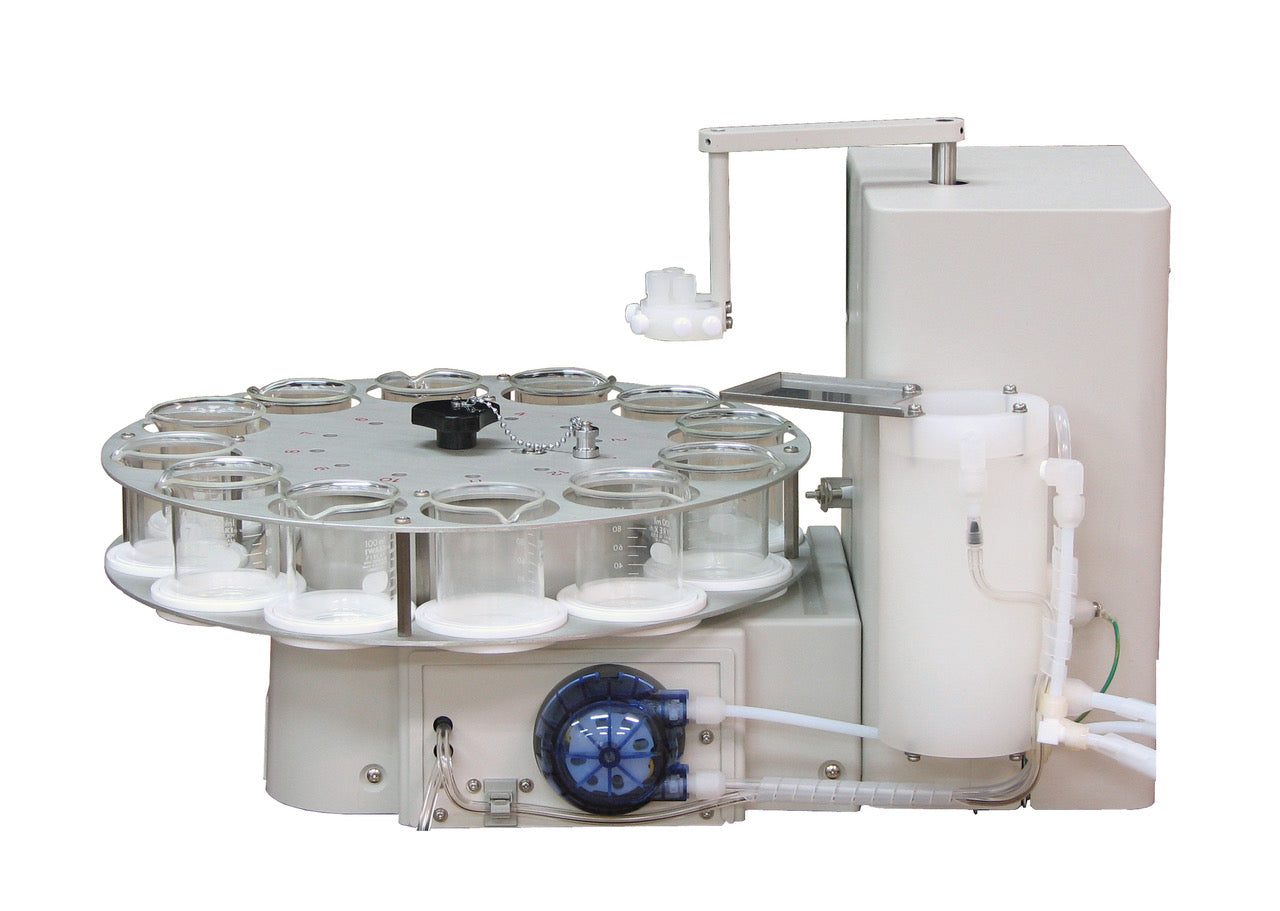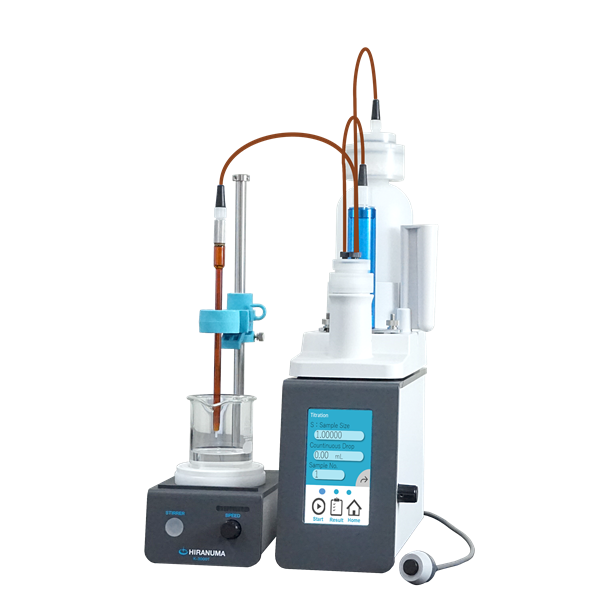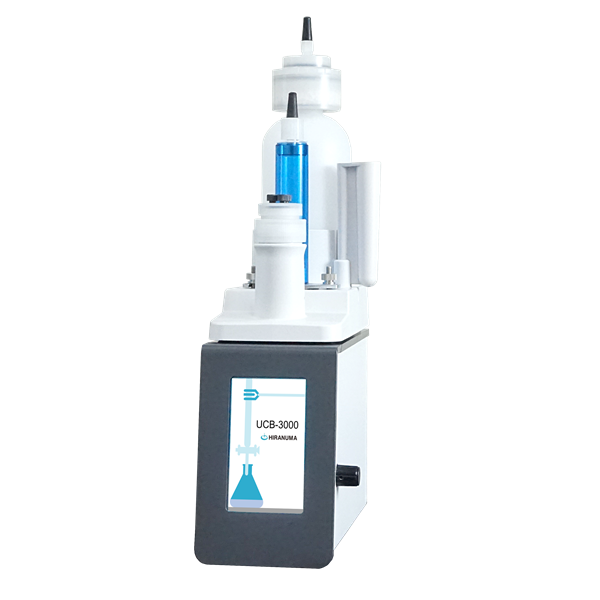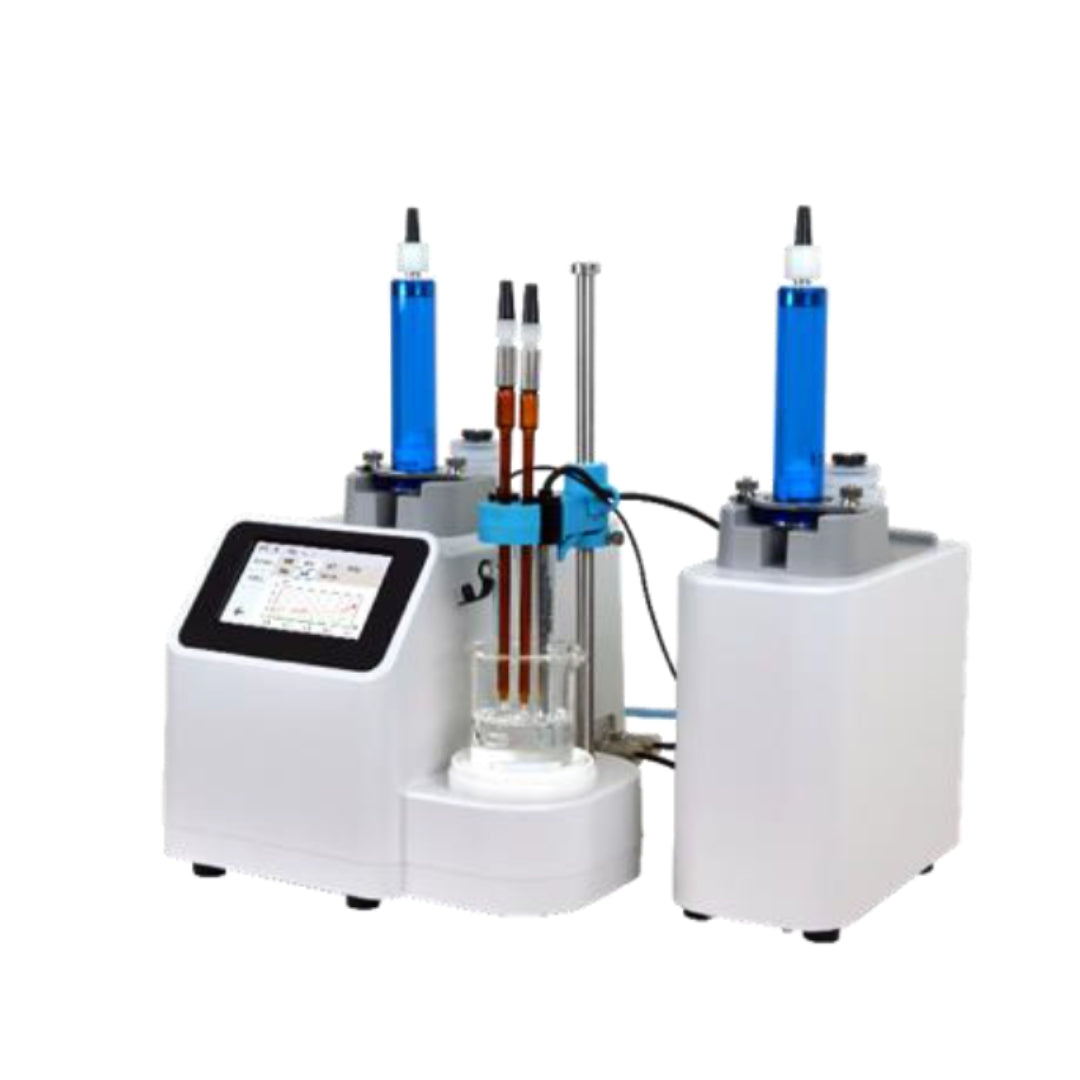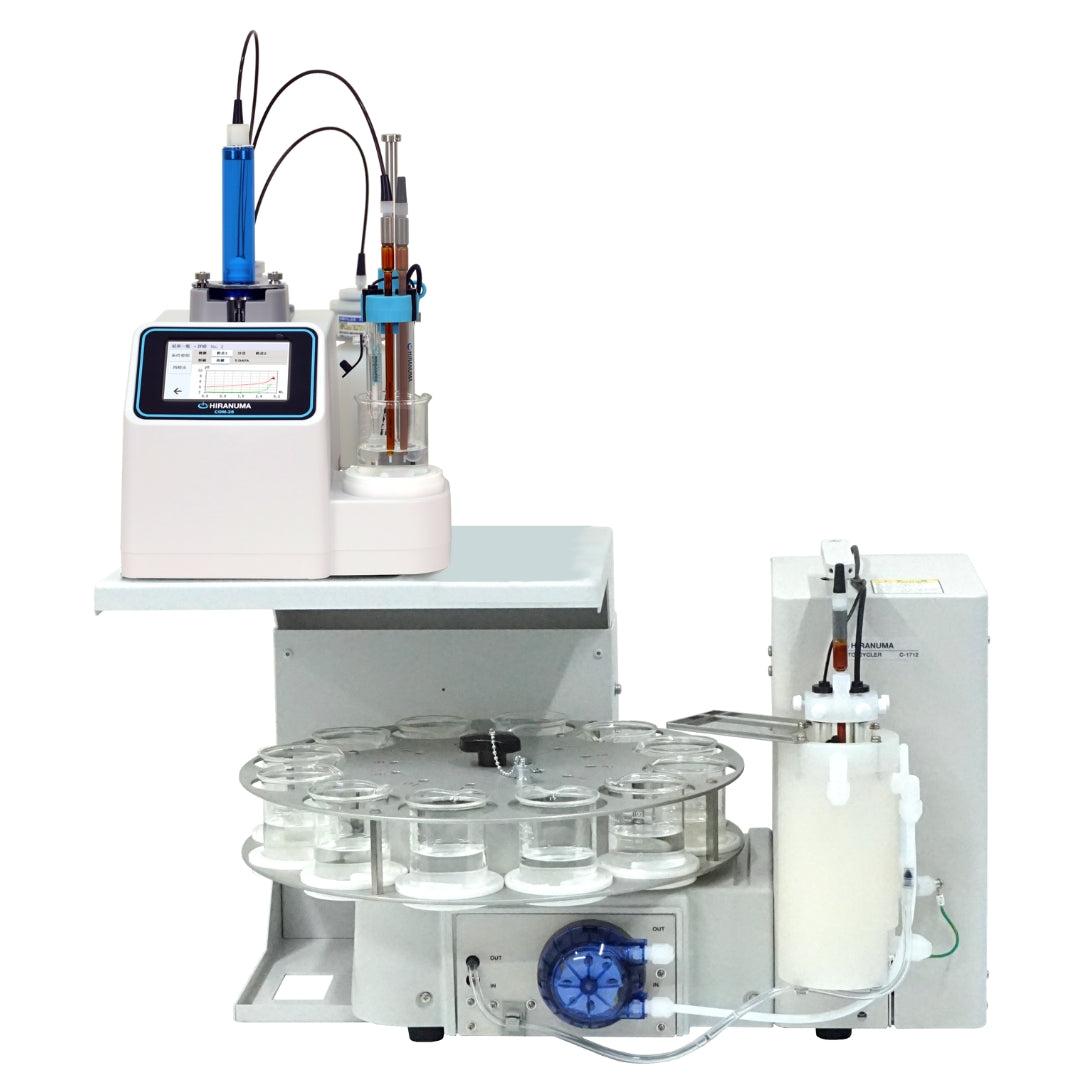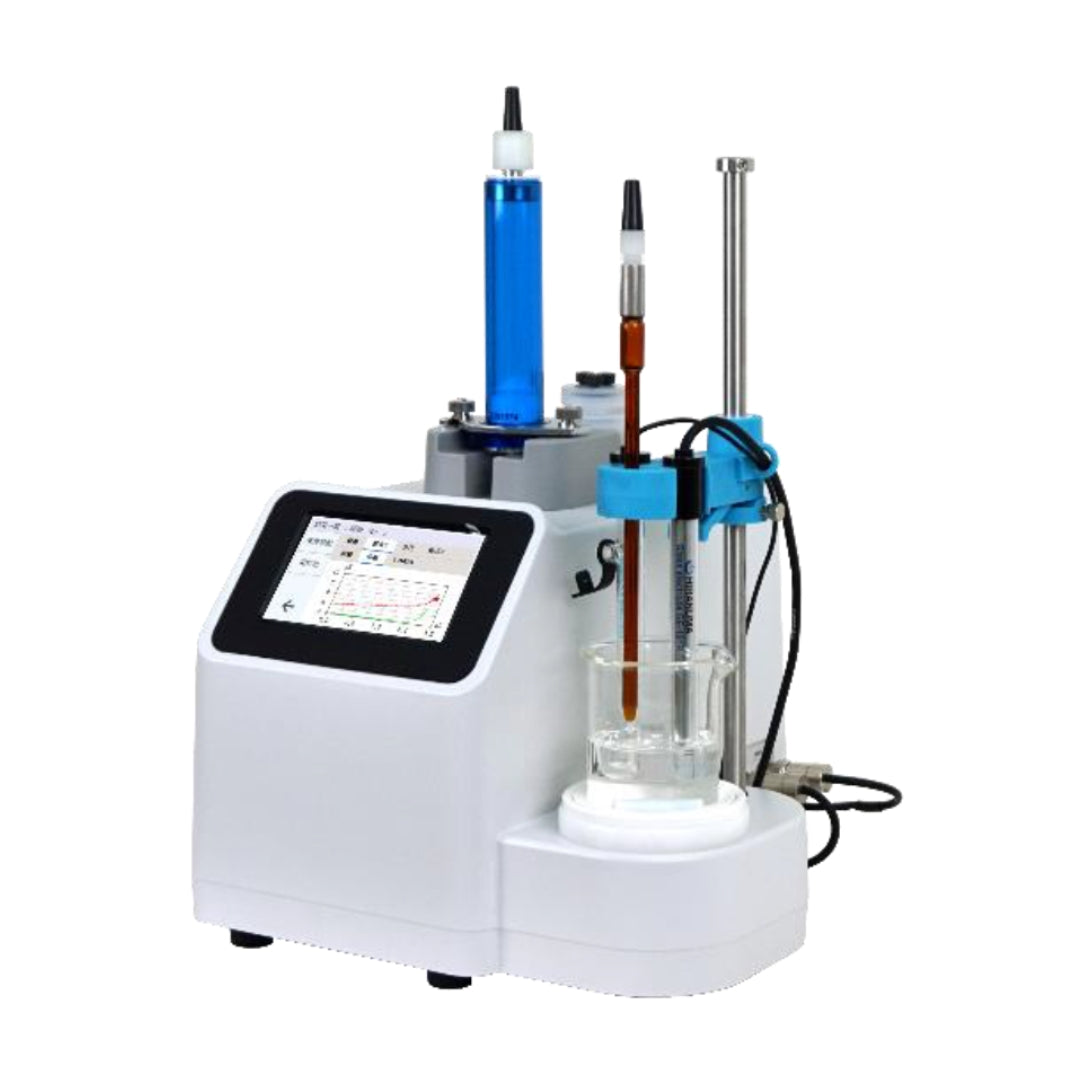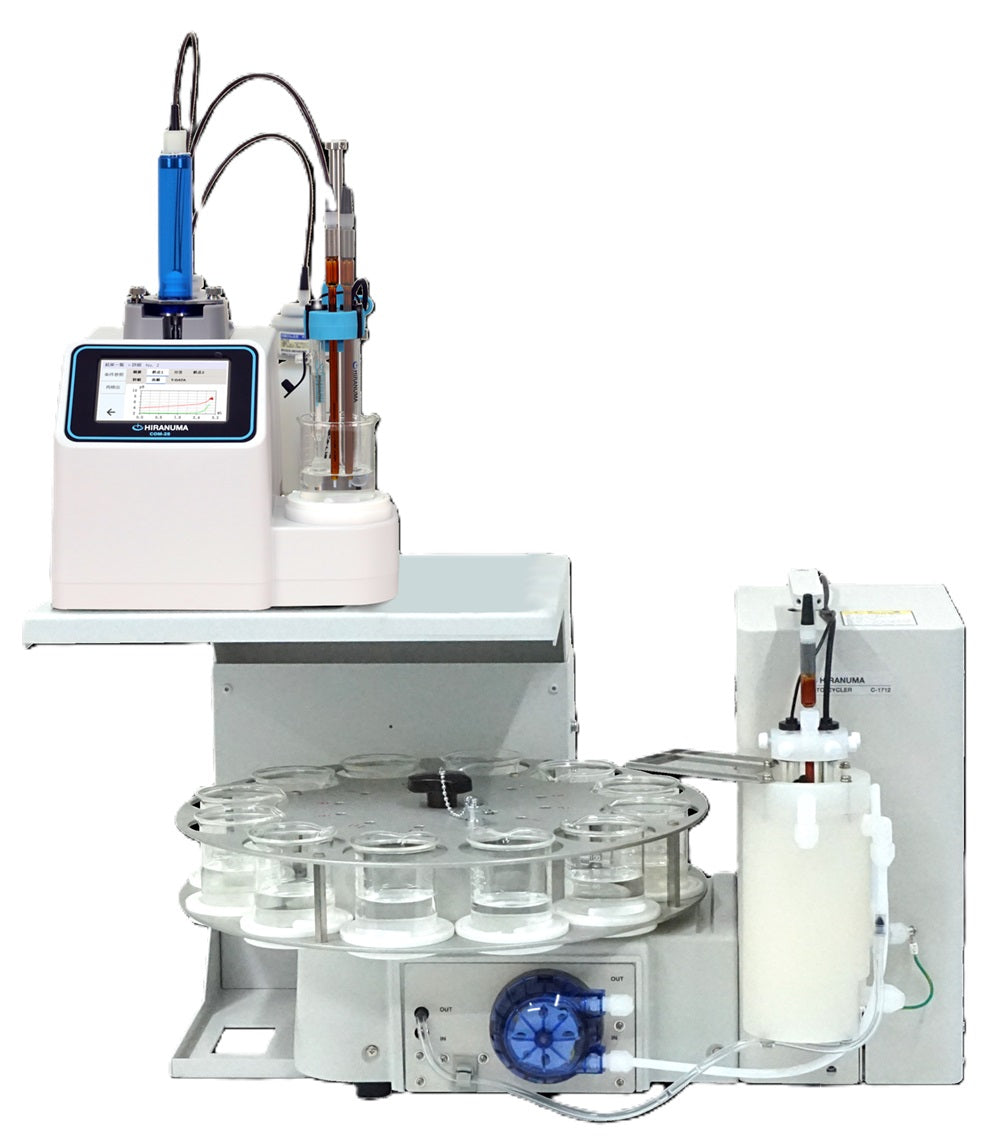| HIRANUMA APPLICATION DATA | Karl Fischer Titrator | Data No. | KF15 | Nov.29. 2018 |
| Water contents | Ketones – KF Coulometry, Direct-Injection Methyl ethyl ketone and Acetone |
1. Abstract
Water content of ketones could be determined by Karl Fischer coulometric titrator. In coulometric titration, iodine of Karl Fischer reagent is generated by electrolysis and generated iodine quantitatively reacts with water. Reaction formula is described below.
H₂O + I₂ + SO₂ + 3RN + CH₃OH → 2RN・HI + RN・HSO₄CH₃
2RN・HI → I₂ + 2RN + 2H⁺ + 2e⁻
When the sample is liquid, generally sample is measured by direct injection into the titration cell. Anode solution containing methanol as solvent is generally used for various sample. However, in the measurement of ketones and aldehydes, since these react with methanol to produce water, the measurement result tends to be higher than the true value (formula (1)).
R₂CO + 2CH₃OH → R₂C(OCH₃)₂ + H₂O ・・・(1)
For above reason, Karl Fischer reagent without methanol should be used for water determination of ketones and aldehydes. There are commercially available reagents with a special composition for ketones and aldehydes. This chapter introduces an example for the water determination in methyl ethyl ketone and acetone. These samples are often used as paint solvents, raw materials of adhesives, and synthetic resins.
2. Apparatus and Reagents
| (1) | Apparatus | ||
| Titrator | : | HIRANUMA Karl Fischer Coulometric titrator AQ-series or MOICO-A19 | |
| Electrolytic cell | : | Standard Cell Fritless Cell (No cathode solution required) |
|
| (2) | Reagents | ||
| Anode solution | : | HYDRANAL Coulomat AK (for ketone, Honeywell) | |
| Cathode solution | : | HYDRANAL Coulomat CG-K (for ketone, Honeywell) |
3. Procedure
| (1) | Fill 100 mL of anode solution and one ampoule of cathode solution into the electrolytic cell as shown in Fig.3.1. When fritless cell is used, cathode solution is not necessary. |
| (2) | Start blanking to attain stable background. |
| (3) | Wash the syringe with sample. |
| (4) | Draw the sample into syringe and then weigh the syringe. |
| (5) | Inject sample from rubber septum of electrolytic cell as shown in Fig.3.2. |
| (6) | Start titration. Measurement parameter is shown in Table 4.1. |
| (7) | Weigh the syringe again and then set the difference of weight to sample size. |

Fig.3.1. Preparation of the reagents. (Standard Cell)

Fig.3.2. Injection of sample.
4. Parameters and results
Table 4.1. Parameters
| Condition File | ||
| Cal Mode | 0:Sample weight(net) | |
| X=(H₂O-BLANK)/SIZE | ||
| Interval Time | 30 | sec |
| Current | SLOW | |
| S-Timer | 0 | min |
| Blank Value | 0 | µg |
| Unit Mode | AUTO | |
| Auto Interval | 0 | g |
| Minimum Count | 5 | µg |
| Back Ground | ON | |
| Sample Size Input | Every Time | |
| Cell Type | Standard/Fritless |
Table 4.2. Results of water content measurement in ketones.
| Sample | Cell | Sample Size (g) |
Water (μg) |
Water Content (ppm) |
Statistics Results | |
| Methyl ethyl ketone | Standard | 0.4565 | 103.8 | 227.4 | Avg. | 223.9 ppm |
| 0.4722 | 107.7 | 228.1 | SD | 6.7 ppm | ||
| 0.4478 | 96.8 | 216.2 | RSD | 3.0 % | ||
| Fritless | 0.4346 | 92.3 | 212.4 | Avg. | 209.3 ppm | |
| 0.4596 | 93.7 | 203.9 | SD | 4.7 ppm | ||
| 0.2856 | 60.4 | 211.5 | RSD | 2.2 % | ||
| Acetone | Standard | 0.4515 | 102.6 | 227.2 | Avg. | 225.3 ppm |
| 0.6059 | 136.0 | 224.5 | SD | 1.7 ppm | ||
| 0.4945 | 110.8 | 224.1 | RSD | 0.7 % | ||
| Fritless | 0.4535 | 100.8 | 222.3 | Avg. | 223.6 ppm | |
| 0.5513 | 124.1 | 225.1 | SD | 1.4 ppm | ||
| 0.3330 | 74.4 | 223.4 | RSD | 0.6 % | ||
5. Note
| (1) | When the side reaction cannot be suppressed even though you use reagent for ketons, phenomena such as unstable blanking or undetectable endpoint can be obtained. In that case, it may be improved by reducing the amount of sample or replacing titration solvent with new one. |
| (2) | Sample with high activity side reaction like cyclohexanone cannot be measured by coulometry – direct injection method. Since the boiling point of cyclohexanone is much higher than that of water and toluene, it can be measured by suppressing the influence of side reaction with coulometry – azeotropic distillation method (Refer to Application Data No. 16.) |
| (3) | The optimized electrolysis control for fritless cell of AQ series released after 2009 improves the measurement accuracy of fritless cell. It can be used with the evaporator as well. Suitable reagent for fritless cell is required. For example, Hydranal coulomat AG and AG-Oven are compatible with fritless cell. Hydranal coulomat AK is a reagent designed to be used in standard type cell with diaphragm. When used in a fritless cell, it is sait to have an error of a few % with respect to the result with standard cell. Results measured with fritless cell and coulomat AK are shown in the Table 4.2 as reference values |
| Keywords: | Karl Fischer, Coulometric titration, Direct injection, Ketone, Fritless cell |

